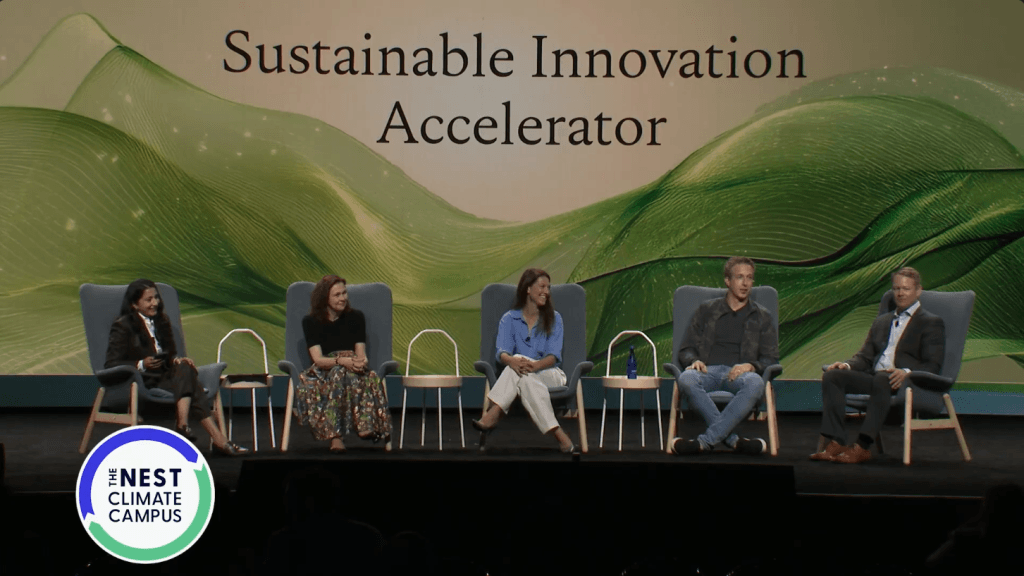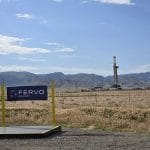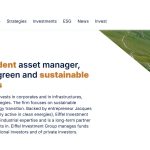Beauty Powered by Nature: Partnerships for a More Sustainable Future at Nest Climate Campus, Climate Week 2025

This engaging panel, hosted at the Nest Climate Campus during Climate Week 2025, focused on how L’Oréal Groupe is mobilizing science and cross-industry collaboration to meet sustainability challenges. The conversation, moderated by Shyla Raghav, Chief Climate Officer at TIME, brought together L’Oréal leaders and key partners to detail how innovation and collective action are shaping a more sustainable, resilient future for the beauty supply chain.
The Panelists: Driving Green Science and Ingredient Innovation
The discussion featured L’Oréal executives responsible for research and innovation alongside two cutting-edge partners:
- Shyla Raghav, Chief Climate Officer, TIME (Moderator)
- Ana Kljuic, PhD, Vice President, R&I, L’Oréal for the Future and Green Sciences
- Adam Jones, Vice President of Business Development, L’Oréal Research & Innovation in North America
- Barbara Belvisi, Founder and CEO, Interstellar Lab
- Tony Martens, Co-Founder and CEO, Plantible
L’Oréal’s Green Sciences: A Vehicle for Innovation
The session began with Ana Kljuic detailing L’Oréal’s corporate sustainability program, L’Oréal for the Future (2020-2030), and the R&I response: Green Sciences. This framework integrates sustainability into every step of product development, with a goal to source over 75% of ingredients from nature or recycled sources by 2030.
The critical challenge addressed by the panel was scaling these innovations. The core of this effort is L’Oréal Green Science Partnerships.
1. Sustainable Cultivation & Bio-Technology
L’Oréal is moving from wild picking to farming, exemplified by Centella Asiatica (known for its repair properties). The objective is to secure supply without increasing environmental pressure. This pillar includes biotechnology, already at scale for ingredients like hyaluronic acid, and green chemistry, used in anti-aging molecules like Pro-Xylane.
2. Cross-Industry Collaboration and Scaling
Adam Jones explained that L’Oréal engages with external startups, academics, and VCs because the problems of climate and biodiversity are “too big for just one company or even one industry.”
- Scaling Challenge: The long-term goal is to move innovations past the pilot stage to commercial reality. Jones noted that new ingredients must be scalable and affordable, warning that if a kilogram costs $10,000, it cannot be used by consumers.
- Adjacency Strategy: L’Oréal actively seeks partners from adjacent industries, like food (Plantible), to open new sustainable ingredient platforms.
Partner Case Studies: Novel Solutions for Resilient Sourcing
The partners demonstrated how their innovations address issues of water conservation, consistency, and resource use:
1. Interstellar Lab: AI-Controlled Farming
Barbara Belvisi explained that her company spun off technology designed for space habitats to create AI-controlled greenhouse systems (Biopods) for Earth.
- Water Conservation: The Biopods use a new spray system (not hydroponics) that accelerates plant growth while saving 99% of water usage.
- Resilience & Quality: By recreating ideal, controlled climates, the system ensures stable sourcing and consistent quality. For example, Centella Asiatica that takes nine weeks to grow in nature can be grown in three weeks in a Biopod, avoiding toxins it might otherwise absorb from the soil.
2. Plantible: Lemna and the New Market Category
Tony Martens described his company’s focus on extracting Rubisco protein (a catalyst in photosynthesis) from Lemna (duckweed).
- Sustainability Profile: Lemna is an aquatic plant that doubles in mass every 48 hours and can be grown year-round, making it highly sustainable.
- New Market: Plantible started in the food industry but found an exciting partnership with L’Oréal, viewing the collaboration as a way to decarbonize products and develop new textures, potentially defining a “whole new product category” in the beauty space.
Broader Impact: Affordability, Social Equity, and Misconceptions
The panel explored the wider implications of this transformation:
Social and Governance Impact
Tony Martens highlighted the social benefits of Plantible’s facility in rural West Texas. By becoming the largest employer in the county and increasing median household income by 61%, the company demonstrates how an environmental purpose can drive economic growth and social equity, allowing communities to be “part of the transition instead of having to fear the transition.”
Misconceptions and the Path Forward
The speakers collectively addressed the biggest misconception about Green Sciences:
- Performance vs. Green: Ana Kljuic countered the belief that if an ingredient is green, “it doesn’t work as well,” stating that new technologies like Biopods actually stimulate plants to produce equal or greater performance.
- Scalability: Barbara Belvisi and Tony Martens stressed that scalability and affordability must be considered from the very beginning, as solutions cannot succeed if they are priced out of the competitive market.
Final Vision: Massifying Green Ingredients
Looking to 2030 and beyond, Ana Kljuic expressed optimism that L’Oréal will be able to integrate all of these separate initiatives—sustainable cultivation, biotechnology, and vertical farming—”across the value chain and really massify” green ingredients. This systemic commitment, driven by partnerships and shared purpose, is seen as the undeniable future of the industry.
Explore more transformative discussions from the Nest Climate Campus by checking out our full series of Climate Week 2025 sessions on ESG News:











